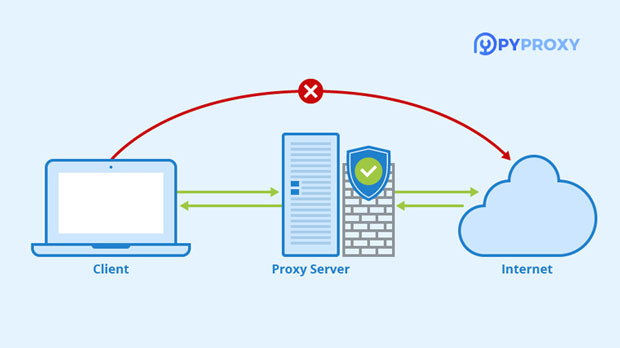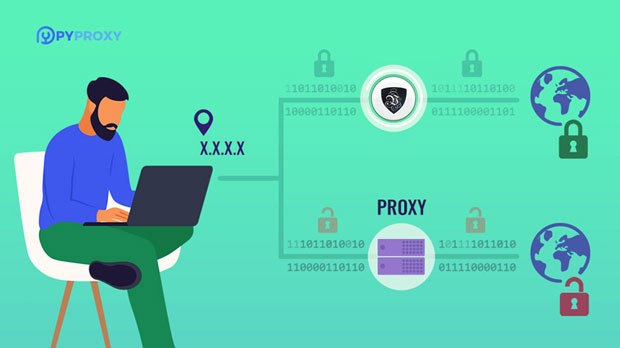Static residential proxies are increasingly popular for individuals and businesses who need to carry out web scraping, data harvesting, and manage multiple social media accounts without facing the limitations that come with typical proxies. These proxies provide a blend of anonymity and security, as they use real residential IPs that belong to real households. This article will explore the best use cases for buying static residential proxies, shedding light on their applications across various industries, advantages, and why they are a smart choice for those seeking more control over their online operations. What Are Static Residential Proxies?Before diving into the best use cases, it’s important to understand what static residential proxies are. These proxies are IP addresses that belong to actual homes and are assigned by Internet Service Providers (ISPs). Unlike data center proxies, which originate from centralized servers, static residential proxies come with the added benefit of appearing as real user traffic. This makes them harder to detect and block by websites. Furthermore, static residential proxies remain the same over time, ensuring consistency for long-term tasks like account management or web scraping.1. Web Scraping for Market ResearchOne of the primary uses of static residential proxies is web scraping. This process involves extracting data from various websites to gather information for competitive analysis, price monitoring, or market research. Static residential proxies are ideal for this use case because they allow you to avoid IP bans and CAPTCHAs, which are common roadblocks in web scraping. By using a static IP that looks like a regular user, businesses can scrape websites without the risk of detection or data throttling. This is particularly useful for industries like eCommerce, travel, and real estate where real-time data is crucial.2. Social Media ManagementFor businesses or individuals who manage multiple social media accounts, static residential proxies are indispensable. Social media platforms often impose restrictions on users who manage multiple accounts from a single IP address. Static residential proxies enable users to manage dozens or even hundreds of accounts without raising any red flags. This is especially beneficial for digital marketers, influencers, and agencies who need to automate tasks, such as posting, following, liking, or sending messages, without the risk of their accounts being banned for suspicious activity.3. Sneaker and Ticket BotsIn recent years, the use of bots to buy limited edition sneakers or high-demand event tickets has become a controversial but common practice. To avoid being blocked or flagged, bot operators use static residential proxies to simulate legitimate user traffic from various geographic locations. Since these proxies appear as real residential IP addresses, they are more difficult to detect than data center proxies, allowing users to bypass website security measures like bot protection, CAPTCHA, and rate-limiting. Static residential proxies also offer the advantage of keeping the same IP over time, ensuring that bots can consistently make purchases without being flagged as suspicious.4. Ad Verification and Brand ProtectionFor advertisers and brand owners, ensuring that ads appear as intended on legitimate websites and not on fraudulent or misleading ones is crucial. Static residential proxies are used in ad verification processes, allowing businesses to monitor where their ads are being placed. By utilizing proxies that mimic real user behavior, companies can identify ad fraud, verify ad placements, and detect any form of click fraud or bot activity. This helps ensure that marketing budgets are being spent effectively and that the brand image is protected.5. Bypassing Geo-RestrictionsStatic residential proxies are often used to bypass geo-restrictions and access region-blocked content. Whether it’s streaming services, news websites, or eCommerce platforms, many websites restrict access based on the user’s geographic location. With static residential proxies, users can appear to be browsing from different regions, thus accessing content that would otherwise be unavailable. This is especially useful for individuals who want to access international streaming platforms like Netflix, Hulu, or BBC iPlayer from countries where these services are restricted.6. SEO and Rank TrackingSearch engine optimization (SEO) is a key component of digital marketing, and static residential proxies play a vital role in SEO-related tasks. Businesses can use these proxies to track search engine rankings, analyze competitor websites, and check how their own website appears in search engine results pages (SERPs). By rotating IP addresses across different locations, businesses can simulate organic user behavior and avoid detection by search engines, ensuring that their SEO efforts are accurately measured without the risk of penalties or restrictions.7. Data Aggregation and Price ComparisonIn industries such as retail, travel, and hospitality, price comparison and data aggregation are critical for staying competitive. Static residential proxies help businesses gather data from a variety of online sources to build comprehensive comparison tools. These proxies allow businesses to collect up-to-date pricing information without triggering anti-scraping mechanisms. For example, eCommerce sites can use static residential proxies to scrape competitor websites for product prices, promotions, and inventory status to adjust their pricing strategies accordingly.8. Fraud Prevention and Risk ManagementOnline fraud is a significant concern for businesses in sectors like banking, finance, and eCommerce. Static residential proxies play a vital role in fraud prevention by simulating legitimate traffic patterns, enabling businesses to detect fraudulent activities. By analyzing the IP addresses of users and their browsing behaviors, companies can identify suspicious activities such as account takeovers, payment fraud, and identity theft. Static residential proxies help verify the authenticity of online transactions and user accounts, making them an important tool for risk management.Why Buy Static Residential Proxies?The key benefit of purchasing static residential proxies is that they combine the advantages of both residential and static IPs. Unlike data center proxies that are easily detected and blocked, static residential proxies offer a high level of anonymity and security. They are more difficult to trace and can be used for a variety of tasks where data security and privacy are essential. Moreover, static residential proxies are ideal for long-term tasks because the IP address remains consistent, reducing the need for constant IP rotation.Additionally, since these proxies are issued by ISPs, they are associated with real residential locations, making them harder for websites to detect as proxies. This gives users a higher success rate in activities like web scraping, bypassing geo-restrictions, and managing multiple accounts.In conclusion, static residential proxies offer a wide range of applications across various industries, including market research, social media management, ad verification, and more. Their ability to provide anonymity, bypass geo-restrictions, and prevent detection makes them an invaluable tool for anyone looking to enhance their online operations. Whether you're scraping data, managing multiple social media accounts, or ensuring that your digital marketing campaigns are running smoothly, static residential proxies provide the necessary functionality to meet your needs. By purchasing static residential proxies, businesses can maintain a competitive edge, ensuring both security and scalability in their online activities.
Oct 09, 2025



































































